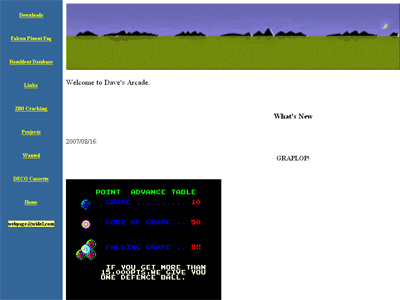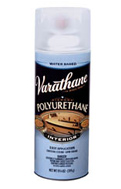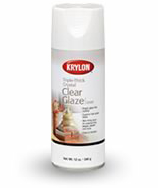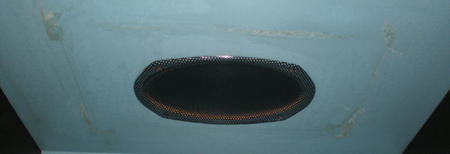My Gameroom
Jr. Pac-man High Score Saver
After today, my list of techs that have the prowess to make modification kits and high score save boards for classic arcade games read Jrok, Matt Osborn, Mark Spaeth, Mike Doyle, Clay Cowgill, Jeff Kulczycki and Dave Widel. A week ago, I hadn’t done a lot of research into others who were making custom boards and kits but then I came across Matt Osborn’s kit’s mostly for Konami games, and he turned me onto Dave Widel.

Flaking Ms. Pac-man Artwork Part 2
A week ago last Sunday, my vibrant, pink Bally Ms. Pac-man finally made it’s way down to Indianapolis, IN via a visit from my mother in law.
I originally posted on January 13th about the flaking artwork, how it was severely cracked in spots and starting to flake. With a strong wipe of the hand, I could probably brush off pieces of the pink, yellow and blue artwork. What would have caused this, what type of storage conditions?
At the time, I had limited photos to work with. Here is a close up photo I took to illustrate the flaking a little better on some of the pink bands on the facing right side of the Ms. Pac-man cabinet.
I still intend to go down to an antique shop, if and when I ever have time, with some printed photos of the cabinet artwork and see if anyone has any suggestions. The best I know to do right now is try to put on some sealer, carefully clean the bottom of the Ms. Pac-man cabinet as needed and hope for the best. Like the other post said, most of the products out there are preventative to preserve painted artwork.
I guess the worst case scenario is someday I take the sideart completely off, purchase some TBD Ms. Pac-man stencils, and re-do the whole game. (Once I have my mba, I shouldn’t have to worry as much about cost).
How do I preserve and save flaking arcade game artwork? (Ms. Pac-man)
Back in December, I managed to be the first in line to purchase an old Ms. Pac-man, sitting in a barn in Sagatuck MI. The game has great pink sideart, and is in really good condition overall, plus, I got it for a song.
Well, it sounds like the game will be making its way down to Indianapolis the week of the 21st – 27th. My main concern is that the artwork has some flaking. I don’t know how to preserve it and clean the machine. There is a good amount of dirt ground into the cabinet, like most old games, but I know that if I wipe the game down I will take some of the artwork with it.
Here is a photo example, the only one I have right now, of an area around the kickplate. I think I read somewhere about putting a clear coat on the stenciled sideart of arcade games to give them a shiny finish, and it also helps preserve the painted artwork.
Can anyone give me any suggestions on how to preserve the artwork on the Ms. Pac-man game, and keep it from flaking and peeling off any further? What cleaner, sealer, or other household product can I use to preserve the arcade artwork?
I did a search on the Klov and Google forums, and most of the flaking is related to glass marquee and bezel artwork, but not how to preserve flaking cabinet artwork. I also did a search on the pinball forums, which seem to have a more rich base of information, and the only tip I found there was “use a sealer”. Just like I thought.
- How do I stop cabinet flaking – Google Collecting Groups
- How do you stop cabinet flaking? – Google Pinball Groups


Has anyone used either of these products to seal their flaking arcade cabinet artwork?
The product on the left is Varathane Diamond Water-Based Polyurethane, and the product on the right is Krylon’s Crystal Clear Glaze.
Looking at the website, the Crystal Clear Glaze is advertised as a hi-shine sealer. I imagine that is dependant on the thickness and the coats, but still, that may not work. Thanks to Leinhit for suggesting this to me as an option, whether it may or may not be appropriate for the cabinet artwork vs. glass artwork pieces. Still, my main concern is how I get the dirt off. I doubt that “dabbing” lightly with a wet sponge is going to get all of the dirt out.
Can anyone help me with ideas? Leave a comment with your ideas.
Here are my posts in the different forums about preservation ideas for flaking, if you are interested;
Removing Masking Tape Residue on Arcade Games
On my long to do list of small arcade maintenance activites, here is a photo of my Pengo.
I think the previous owner of this Sega Pengo also couldn’t figure out how to tone down the sound on the game, so they tapes something over the speaker and left it for quite some time. You can see the thick resilient masking tape residue.
Here is what you will need, pretty simple actually.


I started out with a rag and soaked it with Goo Gone, dabbing it on the residue. But I wasn’t able to apply it as thick as I wanted.
Then I figured out to soak the Scotch Brite pad and then apply it to the underside of the cabinet to start to break down the masking tape remnants.
Then, carefully after a few minutes, I scrubbed carefully in a circular motion (not pressing too hard so I didn’t make tiny scratches in the paint) until most of the residue was gone. Here is the underside of the Pengo cabinet under the marquee after I was finished. It isn’t perfect, but it is a lot better and satisfactory for me.
Installing Mark Spaeth’s Jr. Pac-man Toggle Speed Chip Kit
Took me over a month to finish installing Mark Spaeth’s Jr. Pac-man speed up kit, but I can finally rest easy know that my switch is no longer hanging out of my coin door. There was a couple page thread about the kit on the klov forums, mostly people looking to make their Jr. Pac-man gameplay faster. But, towards the end of the thread, there were some good photos and some advice as people started to get the chip replacements in the mail. (more…)
Artwork Bleed for Screen Printing Reproduction Arcade Artwork
If you have been following my blog, I have slowly been working on vectorizing every piece of the original Pengo artwork to have reproductions made for sale. I have another contact that is doing some vectorizing of a couple pieces of artwork, and he asked me if the Illustrator artwork pieces had to have any bleed on them for registration coverage when taking the pieces to the Screen Printing stage. I knew from working with Brian at Oleszak, that there needed to be some offset bleed on the shapes when making stencils, but I figured this was more for the home arcade game collector, who generally wouldn’t know much about registration for different colors of artwork. A “CYOA” kind of nicety.
So, I emailed Rich at This Old Game. I asked how much of a bleed he would add to individual shapes. 1/8″ bleed seemed too much to me for finer details, but for the larger details, only adding 1/16″ – 1/32″ didn’t seem hardly enough to make a difference. This is what he said;
Basically, to allow the color laps about center of the Black detail that it would cover. Also white is usually full coverage on the back of 2nd surface prints. On fine detail, I go in and just split the difference in specific spots where the thickness of the black may vary. But to answer your question, I do tend to add approx 1/8″ bleed unless that bleed doesn’t fit the artwork then I have to manually go in and split that difference. Any text I usually outline 5 to 10 pts.
I got a file from him, demonstrating some of this, but I don’t completely understand all of the concepts for screen printing reproductions yet. If you don’t have any idea what I am talking about, here is a photo of my Pengo marquee. You can see the bleed for the “TM” text showing through, as well as some of the halftone patterns and other pieces of artwork that overlap to make sure there is enough coverage.
The main idea I got from the information he sent was, yes, add bleed to the artwork to help with registration of colors, and it is a judgement call based on the detail of the artwork. The finer details of the reproduction arcade artwork add 1/16″ to 1/32″ of an inch bleed, and on some of the bigger, thicker details add 1/8″. (Not to mention, even though I didn’t ask this, I am sure that I need to start separating my artwork in colored layers) I know that both Brian and Darin read what I write here when they have time, and I figured they could lend their expertise in the information, or even Rich if he stops by. My main question remaining is what Rich said above;
Also white is usually full coverage on the back of 2nd surface prints.
Rich is the absolute best in terms of response time, although his emails are sometimes hard to understand because of the way they are worded. Here is a tight crop of the final prepped file he used reproduce the Professor Pac-man overlays from my vector artwork.

This looks exactly like the “TM” above, except, if the text is yellow, why have the color “white”. Wouldn’t that bled color be yellow there, showing really fat lettering?
So, there is a lot of work to do, added work to the final vectorizing Pengo files that I thought I had finished. But, they need to be right. I haven’t added bleed to any of them, so I will have to go back through and do that. Here are some close up details of my start to adding bleed to the Pengo artwork. There is a before vector trace (Purple Outline), and an after vector trace with the additional bleed (Light Blue Outline). (And after I got into the file and tried it for myself, I found that even 1/32″ bleed would overlay some of the surrounding pieces of artwork, and that I had to go down as small as 1/64″ (.016 of an inch rounded) bleed to prevent overlap.)
Pengo Locked Up During Gameplay
I had never had this happen before today, but today it happened twice when I was playing my Pengo arcade game.
The first time, a sno-bee got stuck at the top of the screen between two ice blocks, and just kept bouncing there. I didn’t mind, because that meant I could go around the playing field and match up the diamond blocks for my bonus points. I was able to break one of the ice blocks that Sno-Bee was wedged against, and then I smashed him with another block.
But the second time in less than 10 minutes, I was trying to match up the diamond blocks, so I decided I would guide Pengo up next to the dormant Sno-Bee. Well, some of the game code stick executed, Pengo died when he touched the Sno-Bee, but then, the game just sat there, playing the music. Check it out;
I had to turn the upright machine off and back on again. I hadn’t even seen this error in Pengo that causes it to lock up, or freeze. I know sometimes I can run through some of the ghosts in Ms. Pac-man, and even in Pengo, it seems like I get lucky either touching a Sno-Bee without dying or running through one. But not in this case.
Anyone else have this issue with their Pengo PCB board? Is it just mine? If you have issues, does the Sno-Bee only get stuck at the upper right of the play field? Or is it only one board configuration? Or maybe this is just this revision of the PCB, since I know there are a couple. Voice your thoughts.









